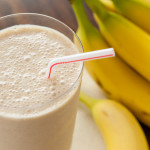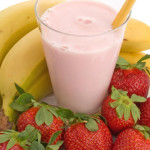Healthy blood pressure diet
Hypertension (high blood pressure) is a common condition that can lead to serious complications if untreated. Making dietary changes and losing weight are effective treatments for reducing blood pressure.
Hypertension sometimes is called the silent killer because, by itself, it produces no symptoms. If you don’t get your blood pressure checked regularly, hypertension could go unnoticed, and untreated, for years.
Other lifestyle changes that can help to reduce blood pressure include stopping smoking, reducing stress, reducing alcohol consumption, and exercising regularly. These changes are effective when used alone, but often have the greatest benefit when used together.

DIETARY CHANGES AND BLOOD PRESSURE
Making changes in what you eat can help to control high blood pressure.
Reduce sodium — The main source of sodium in the diet is the salt contained in packaged and processed foods and in foods from restaurants. Reducing the amount of sodium you consume can lower blood pressure if you have high or borderline high blood pressure.
The body requires a small amount of sodium in the diet. However, most people consume more sodium than they need. A low-sodium diet contains fewer than 2 grams (2,000 milligrams) of sodium each day.
Reduce alcohol — Drinking an excessive amount of alcohol increases your risk of developing high blood pressure. People who have more than two drinks per day have an increased risk of high blood pressure compared to nondrinkers; the risk is greatest when you drink more than five drinks per day.
On the other hand, drinking one (for women) or two (for men) alcoholic beverages per day appears to benefit the heart in people greater than 40 years old. This protective effect applies to people with preexisting high blood pressure.
Eat more fruits and vegetables — Eating a vegetarian diet may reduce high blood pressure and protect against developing high blood pressure. A strict vegetarian diet may not be necessary; eating more fruits and vegetables and low-fat dairy products may also lower blood pressure.
Eat more fiber — Eating an increased amount of fiber may decrease blood pressure. The recommended amount of dietary fiber is 20 to 35 grams of fiber per day. Many breakfast cereals are excellent sources of dietary fiber.
Eat more fish — Eating more fish may help to lower blood pressure, especially when combined with weight loss .
Caffeine — Caffeine may cause a small rise in blood pressure, although this effect is usually temporary. Drinking a moderate amount of caffeine (less than 2 cups of coffee per day) does not increase the risk of high blood pressure in most people
Your kidneys do this by filtering your blood and sucking out any extra fluid, which it then stores in your bladder as urine. This process uses a delicate balance of sodium and potassium to pull the water across a wall of cells from the bloodstream into a collecting channel that leads to the bladder.
Eating salt raises the amount of sodium in your bloodstream and wrecks the delicate balance, reducing the ability of your kidneys to remove the water. By eating more fruit and vegetables, you will increase your potassium levels and help to restore the delicate balance. This will help your kidneys to work more efficiently – and help to lower your blood pressure to a healthy level.
Potassium, calcium, and magnesium
Not eating enough foods containing potassium, calcium, and magnesium may contribute to high blood pressure.
To get enough of these nutrients, eat a balanced diet that contains plenty of fresh fruits, vegetables, dairy foods, and whole grains. Most people do not need to take dietary supplements to get enough potassium, calcium, and magnesium.
Good sources of potassium
All fresh fruits and vegetables and meats are good sources of potassium. Examples include the following:
- Bananas, cantaloupe, oranges, and orange juice
- Raw or cooked spinach, lima beans, zucchini, broccoli, carrots, cauliflower, and artichokes
- Potatoes
- Legumes (cooked dried beans and peas) such as pinto beans, chickpeas (garbanzo beans), and lentils
- Nuts and seeds
Good sources of calcium
- Low-fat dairy products (yogurt, skim milk, cheese)
Good sources of magnesium
- Legumes (cooked dried beans and peas), seeds, and nuts
- Halibut
- Milk and yogurt
- Brown rice and potatoes
- Tomatoes
- Bananas and watermelon
- Leafy green vegetables
How much salt is too much?
An adult should eat no more than 6g of salt a day, but most of us eat much more than this.
Most of the salt we eat every day is “hidden”. Roughly 80% of the salt we eat is hiding in processed foods like bread, biscuits and breakfast cereals, and prepared ready meals or takeaways. Only 20% comes from the salt we add while cooking or at the table.
What salt levels mean
To avoid the hidden salt and cut down your salt intake, it is best to eat foods that are low in salt and stop using salt when cooking or at the table.
By reading the food label, you can see if a food is low, medium or high in salt (do not confuse with sodium, see below):
- Low – 0.3g salt or less per 100g of food – Eat plenty of these
- Medium – 0.3-1.5g salt per 100g of food – Eat small amounts occasionally
- High – 1.5g salt or more per 100g of food – Avoid these completely
What sodium levels mean
Some labels may not say how much salt the food contains, but may say how much sodium it contains. Sodium is one of the chemicals in salt. 1g of sodium is the same as 2.5g of salt.
- Low – 0.1g sodium or less per 100g of food – Eat plenty of these
- Medium – 0.1-0.6g sodium per 100g of food – Eat small amounts occasionally
- High – 0.6 sodium or more per 100g of food – Avoid if possible
If the label does not say how much salt or sodium the food contains, look at the ingredients list. The closer to the top of the list salt appears, the more salt it is likely to contain.
8 ways to eat less salt and help your blood pressure
- Don’t add salt when cooking. This includes things like soy sauce, curry powders and stock cubes.
- Get extra flavour with herbs and spices, and from seasonings like chilli, ginger, lemon or lime juice.
- If you really can’t do without a salty favour, you could try using a small amount of low-sodium salt substitute. If you have kidney problems or diabetes, check with your doctor or nurse first.
- Table sauces like ketchup, mustard and pickles can contain a lot of salt. Check the label and choose low-salt options.
- Bread and breakfast cereals can contain a lot of salt. Check the labels to compare brands.
- Smoked meats and fish contain a lot of salt. Avoid these if you can.
- If you are eating out, ask if your meal can be made with less salt. This may not be possible, but it is always worth asking.
- Look out for low-salt recipes. There are a number of low-salt cookbooks available, or you can search on the Internet.
Don’t be too concerned about the exact amount of salt you eat, instead try to always eat foods with the lowest salt level. 6g of salt a day is the maximum you should eat, and the less you eat the better.
At first, food without salt can taste bland, but don’t give up. After a few weeks your taste buds will adjust and you will start to enjoy food with less salt.
Diet, Medication, or Both?
While dietary changes can be a big help to many people, not everyone will be able to manage their blood pressure using diet alone. Some people will need medication to keep their blood pressure in check. “We shouldn’t demonize medication. There are benefits of drug therapy. Drug therapy and diet are complementary, not mutually exclusive. The point is lower blood pressure. That’s the goal.”



